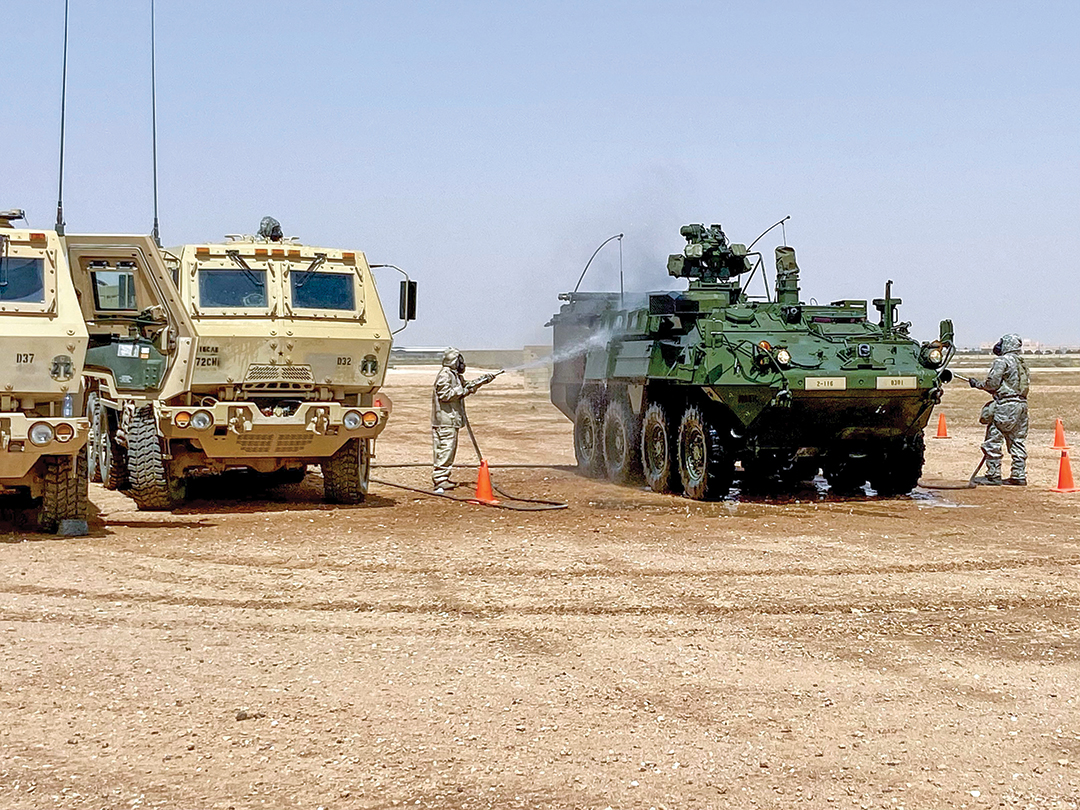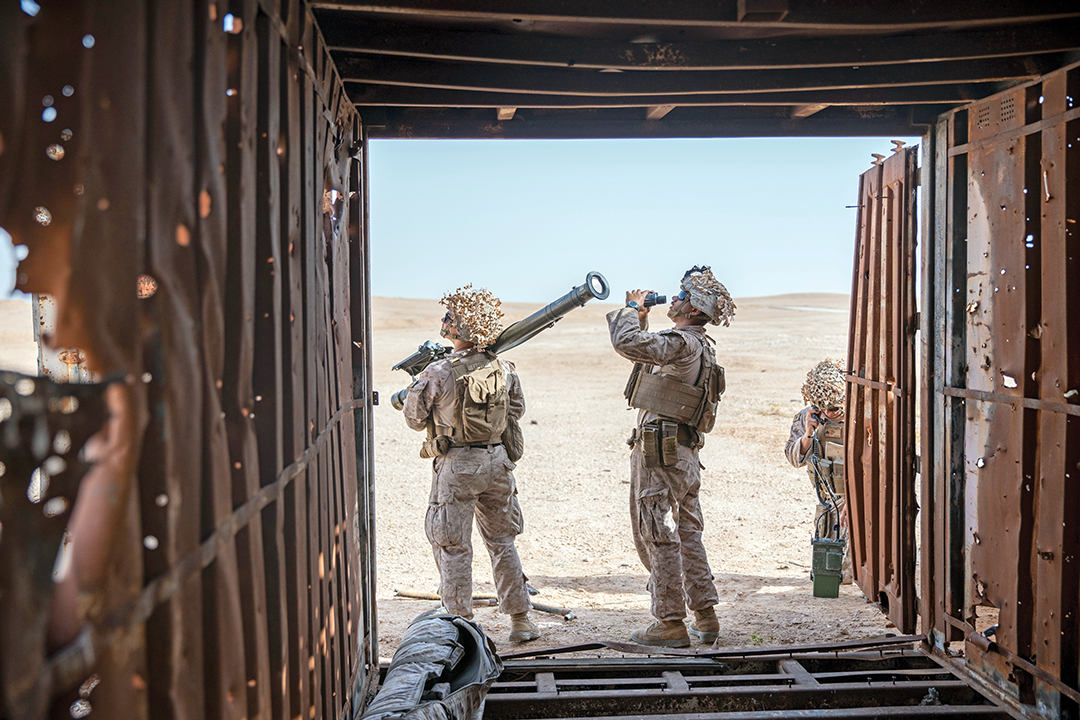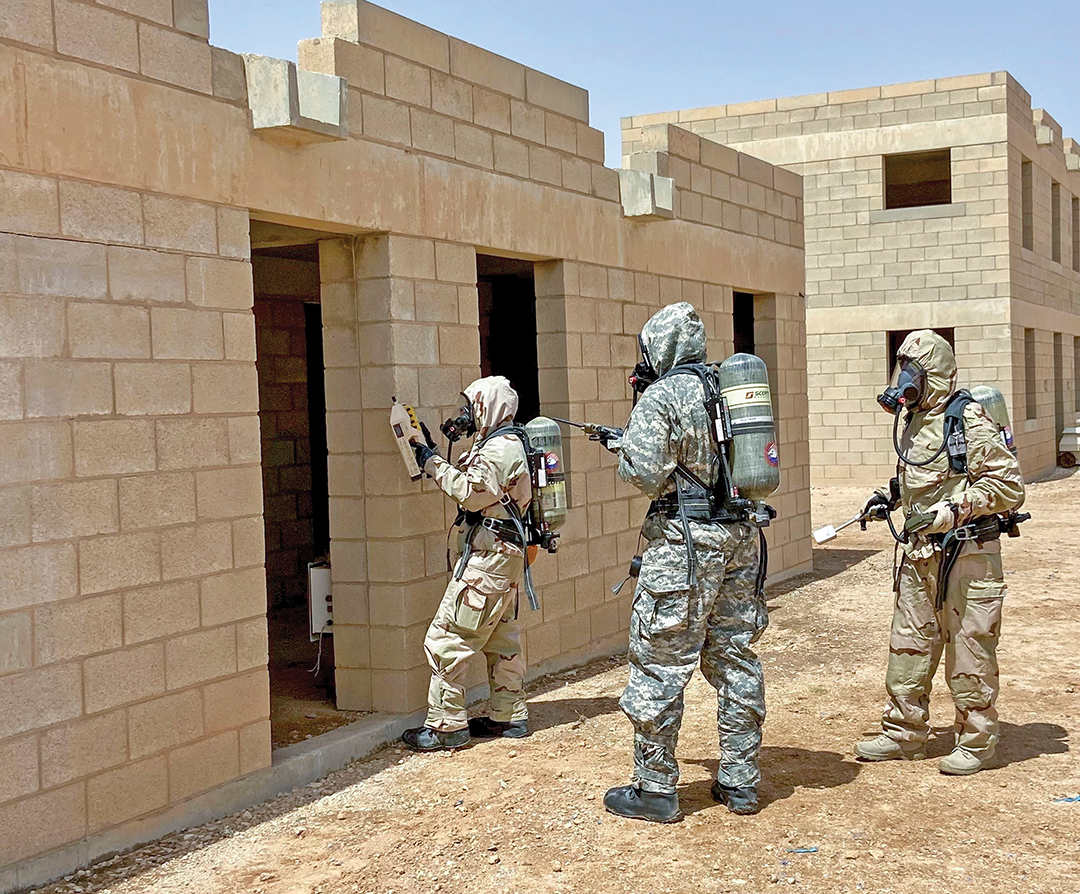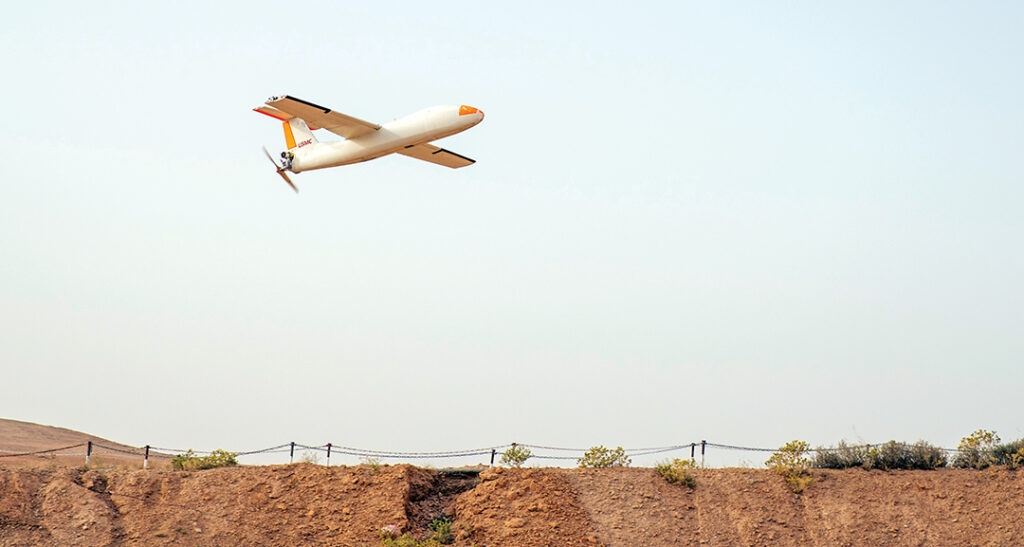UNIPATH STAFF
The situational map at military headquarters displayed ominously glowing streaks of green arcing from enemy missile bases. They represented missiles on course for military and civilian installations in the Arabian Gulf.
But the enemy had surrendered much of the element of surprise: Tracking the missiles was a military team consisting of Saudis, Emiratis, Bahrainis, Qataris, Omanis and Kuwaitis, part of a multinational coalition tasked with defending the region.
The responses were as varied as the defensive arsenals of the partner forces throughout the Arabian Gulf. Patriot anti-missile batteries erupted with counterfire. Fighter jets sprang from airfields to intercept the approaching threat. For missiles that evaded the defensive screen, ground forces raced to impact sites to contain any damage.
Coordinated defense by a joint multinational force: That was a major theme of Eagle Resolve 23 as host nation Saudi Arabia invited hundreds of troops from partner nations to its training grounds for nearly two weeks in May and June 2023. Eagle Resolve is held every two years between United States Central Command and the Gulf Cooperation Council (GCC).
The hundreds of Eagle Resolve participants, divided between field forces reacting to simulated emergencies and a command post contingent honing its ability to respond to overlapping crises, got a taste of threats typical of the Middle Eastern region. Missions included shooting down missiles and drones, disposing of explosives, containing chemical weapons attacks, combating armed terrorists, disarming underwater mines, conducting information operations, and rescuing sick and injured Soldiers.

“Our strategic partnerships in the region — to include our longstanding partnership with the Saudi Armed Forces and other GCC partner nations — are critical to regional security and stability,” said Gen. Michael “Erik” Kurilla, commander of U.S. Central Command. “The nations of the GCC maintain cutting-edge weapon systems and wield first-class combat capability.”
Central to Eagle Resolve was the threat posed by drones, cruise and ballistic missiles, and improvised explosive devices. These threats have demanded technological innovation from partner nations, particularly aerial, surface and underwater drones guided by artificial intelligence to provide an early warning shield.
The U.S. Navy has pioneered the use of these unmanned defensive systems to act as scouts in places like the Arabian Gulf and Red Sea. Data collected by the network of drones is piped to naval operations centers throughout the region. Unmanned systems have also been instrumental in detecting suspicious vessels on seas too vast to patrol with warships alone.
With the help of the U.S., GCC nations are considering creating an Integrated Missile and Air Defense (IMAD) system to deter, detect and destroy aerial threats. Eagle Resolve served as a preliminary trial run of the interoperability of GCC forces.
Although scrambling jets and Patriot missile batteries destroyed most of the attacking missiles and bomb-laden drones in the training scenarios, Eagle Resolve planners allowed some attack simulations to pierce the defensive net. The goal was to test exercise participants’ skill in coordinating disaster response with Saudi civilian agencies.
Missiles and unmanned aerial systems can carry not just conventional explosives but also chemical or biological agents that could create mass casualties if not intercepted or neutralized. In the simulations, enemy attacks destroyed aircraft on the ground, crippled a radar station, damaged a chlorine plant and released the toxic nerve agent ricin.

More than 300 Soldiers and civilians joined in one Eagle Resolve drill to counter chemical, biological, radiological and nuclear (CBRN) weapons. It was the largest CBRN drill ever conducted by U.S. Central Command at one of its military exercises.
On the Arabian Gulf, the crew of the Royal Saudi Navy missile corvette HMS Tabuk trained alongside U.S. surface drones designed to extend the sensor range of naval patrols. On land, U.S. Marines demonstrated the use of shoulder-held surface-to-air missiles to destroy aerial drones.
“The realistic training and complex exercise scenarios like those at Eagle Resolve test our capabilities and responses in a joint operations environment and prepare us to defeat threats,” one GCC general commented during the exercise.
Another highlight of Eagle Resolve was a senior leader seminar in which regional commanders voiced support for greater military cooperation in the Arabian Gulf.
A common refrain was a desire for increased intelligence-sharing among partner nations to preempt threats.
One military commander from the Arabian Gulf noted how asymmetric warfare using cheaply acquired weaponry has replaced conventional warfare among entities that have little respect for international law.

“The threat has evolved and become sophisticated in terms of selecting targets and planning attacks,” he said. “As my friends have mentioned, this war requires collective efforts, and intelligence-sharing should be considered its backbone.”
Vice Adm. Brad Cooper, commander of U.S. Naval Forces Central Command, the U.S. 5th Fleet and Combined Maritime Forces, used the occasion to describe innovations in technology and training that have made the region safer.
In May 2023, right before the start of Eagle Resolve, Combined Maritime Forces established Task Force 154 based in Bahrain. Its mission is to train partner navies throughout the Middle East on the latest innovations in technology and tactics.
Cooper also invited junior officers from the region to serve at the Bahrain-based Robotics Operations Center to perfect the use of unmanned systems and artificial intelligence at sea.
“Our navies are at their very best when we train, operate and work together,” Cooper told his fellow commanders.

